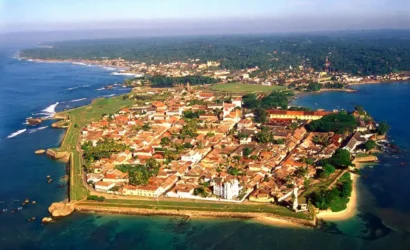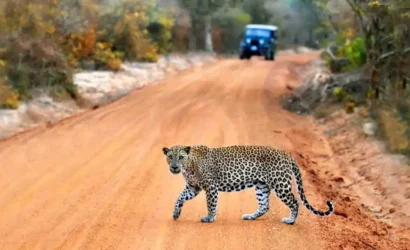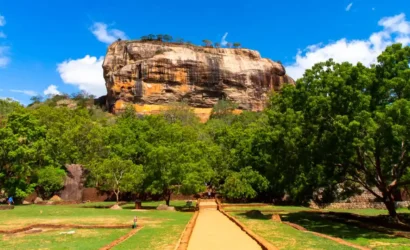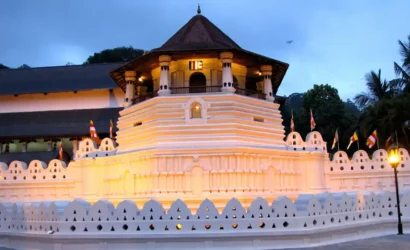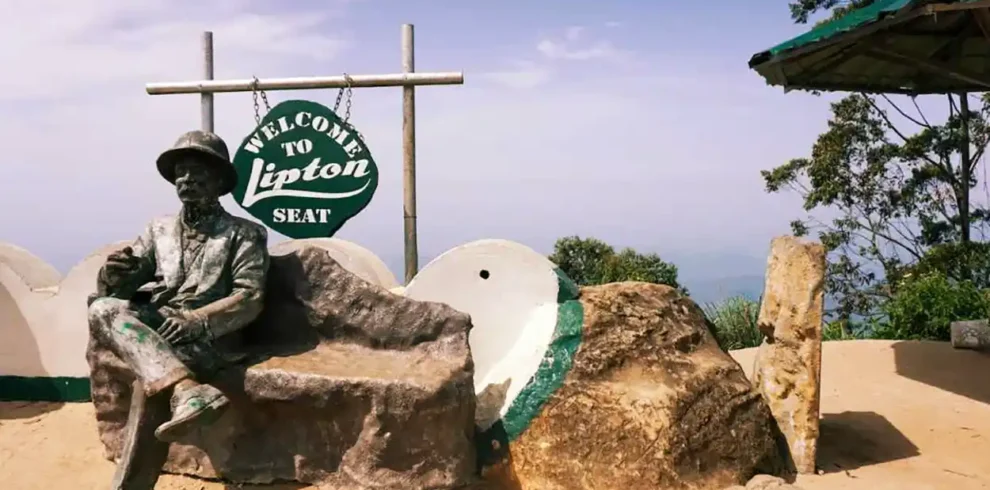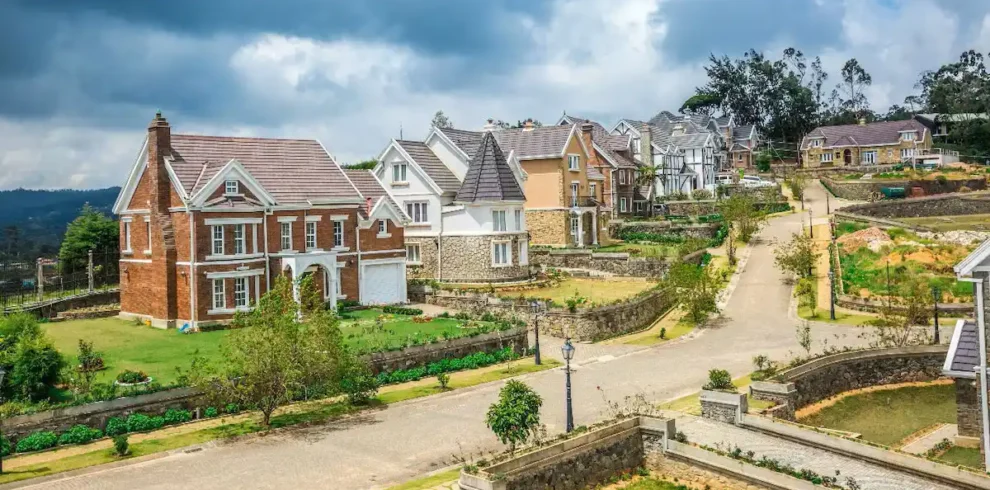Wilpattu National Park, located in northwest Sri Lanka, is one of the country’s largest and oldest national parks. Established in 1938, it spans over 131,000 hectares of diverse ecosystems, including dense forests, open grasslands, and unique villus, or natural lakes.
This park is renowned for its rich wildlife. Visitors often spot Sri Lankan leopards, elephants, sloth bears, and various bird species, making it a prime destination for wildlife enthusiasts. The park’s varied landscapes provide ideal habitats for these animals.
Wilpattu is also significant for its historical and cultural heritage. Ancient archaeological sites within the park reveal remnants of early civilization and Buddhist monasteries. These sites add depth to the visitor experience.
Nature Beauty
Wilpattu National Park is a stunning showcase of Sri Lanka’s natural beauty. As you enter the park, you are greeted by a diverse landscape that includes lush forests, open grasslands, and shimmering lakes known as villus. These villus attract a variety of wildlife, creating picturesque scenes that are perfect for photography.
The dense forests are home to towering trees and vibrant flora. Here, you can find an array of plants and flowers that bloom in different seasons. The rich greenery provides a habitat for countless bird species, making it a birdwatcher’s paradise.
As you explore further, the park’s unique topography reveals hidden gems, such as natural ponds and scenic viewpoints. These areas offer breathtaking vistas, especially at sunrise and sunset, when the landscape is bathed in golden light.
The sounds of nature enhance the experience. Listen for the rustling leaves, chirping birds, and distant calls of wildlife. This tranquil atmosphere invites visitors to connect with nature and enjoy moments of reflection.
History
Wilpattu National Park, established in 1938, is one of Sri Lanka’s oldest national parks. Initially designated as a wildlife sanctuary, it was later upgraded to a national park to enhance conservation efforts. The name “Wilpattu” comes from the Sinhalese word “Villu,” referring to the park’s unique natural lakes.
Throughout history, the park has been a vital habitat for diverse wildlife, including leopards, elephants, and various bird species. However, during the civil conflict in the late 20th century, the park suffered significant damage. Many areas became inaccessible, and wildlife populations declined.
In 2003, after years of restoration and conservation efforts, Wilpattu was reopened to the public. Since then, it has become a prime destination for eco-tourism, attracting visitors from around the world. Today, the park is recognized not only for its natural beauty but also for its historical significance and ongoing conservation efforts.
Cultural Significance
Wilpattu National Park is not just a wildlife sanctuary; it is also rich in cultural heritage. The park is home to ancient archaeological sites, including remnants of Buddhist monasteries and shrines. These historical landmarks reflect the long-standing relationship between nature and spirituality in Sri Lanka. Visitors can explore these sites and gain insight into the region’s religious practices and beliefs.
Additionally, the park has deep connections with local communities. For generations, these communities have relied on the natural resources of the park. Their traditional knowledge of the land enriches the experience for visitors. Engaging with locals can provide valuable perspectives on conservation and sustainable living.
Moreover, Wilpattu plays a vital role in conservation efforts. By protecting its unique ecosystems and wildlife, the park helps preserve Sri Lanka’s natural heritage for future generations. This commitment to conservation enhances the cultural landscape, intertwining the preservation of nature with the preservation of cultural identity.
Key Attractions and Activities
Wilpattu National Park is a treasure trove of wildlife and natural beauty, offering a range of attractions and activities for visitors. Start your adventure with a guided jeep safari. This is the best way to explore the park’s vast landscapes and spot iconic wildlife, including the elusive Sri Lankan leopard and herds of elephants.
As you traverse the park, be sure to visit the villus, which are natural lakes that attract a variety of animals. These villus are especially active during the dry season, making them prime spots for wildlife viewing. Bring your binoculars for birdwatching, as over 200 bird species call the park home. Look for endemic species like the Sri Lankan junglefowl and migratory birds.
For a deeper connection to nature, consider taking a nature walk with a knowledgeable guide. These walks allow you to appreciate the flora and fauna up close while learning about the park’s ecosystems. You can also explore cultural sites within the park, including ancient ruins and archaeological findings that reflect Sri Lanka’s rich history.
Photography enthusiasts will find Wilpattu to be a photographer’s paradise. The stunning landscapes, combined with the chance to capture wildlife in their natural habitat, provide excellent opportunities for memorable shots.
If you’re up for an immersive experience, camping is allowed in designated areas. Spending a night under the stars, surrounded by the sounds of nature, is truly magical.
Lastly, make sure to engage with conservation efforts during your visit. Learn about the ongoing initiatives aimed at preserving the park’s unique ecosystems and wildlife, enhancing your understanding of the natural world.
Athugala Viharaya offers a unique blend of natural beauty, cultural significance, and spiritual tranquility. The climb to Elephant Rock rewards visitors with breathtaking views of Kurunegala, while the majestic Buddha statue and serene atmosphere invite reflection. Engaging with the local community adds depth to your experience, allowing you to learn about Buddhist traditions. Whether you seek adventure, peace, or a glimpse into Sri Lanka’s rich heritage, Athugala Viharaya is a must-visit destination that promises to leave a lasting impression.
Highlights of Wilpattu National Park
- Stunning Views: Enjoy breathtaking Rich Biodiversity: Experience a diverse range of wildlife, including the elusive Sri Lankan leopard, elephants, sloth bears, and numerous bird species.views of Kurunegala from the top of Ethagala, also known as Elephant Rock.
- Unique Villus: Explore the park's distinctive "villus," which are natural lakes that attract a variety of animals, especially during dry seasons.
- Scenic Landscapes: Enjoy breathtaking views of the park's varied landscapes, from lush forests to open grasslands and shimmering water bodies.
- Birdwatching Paradise: Discover over 200 species of birds, including endemic and migratory species, making it a haven for birdwatchers.
- Guided Safaris: Join expert-led jeep safaris that enhance your wildlife experience with valuable insights and increased chances of spotting animals.
- Cultural Sites: Visit ancient archaeological sites within the park that reflect the rich history of Sri Lanka, adding depth to your adventure.
- Peaceful Atmosphere: Embrace the tranquility of nature as you explore the park, offering a perfect escape from the hustle and bustle of everyday life.
- Camping Opportunities: Enjoy an immersive experience by camping in designated areas, allowing you to connect with nature under the stars.
- Photography Hotspot: Capture stunning photos of wildlife and landscapes, especially during golden hour when the lighting is perfect.
- Conservation Efforts: Learn about ongoing conservation initiatives aimed at protecting the park's unique ecosystems and wildlife.

